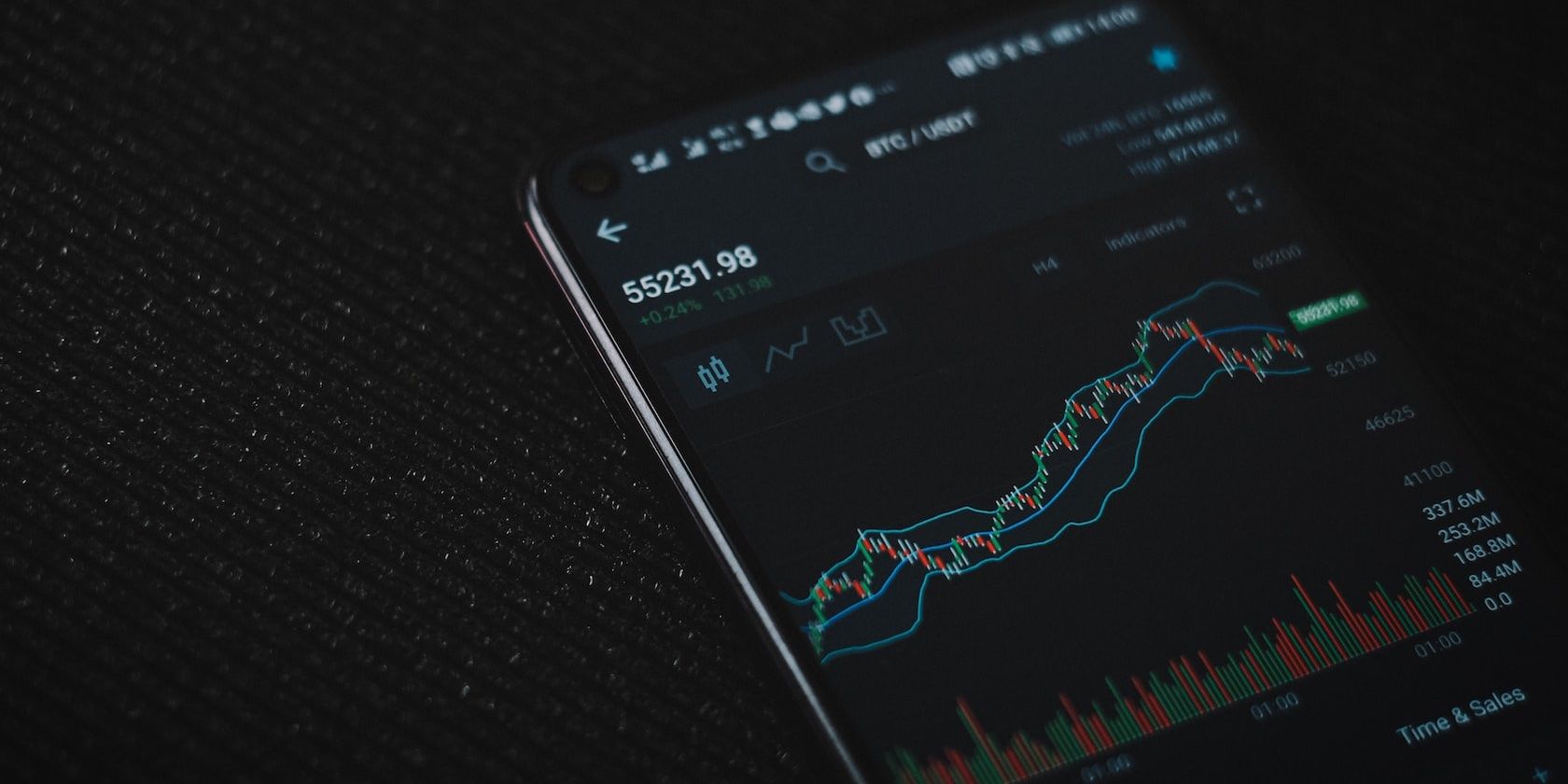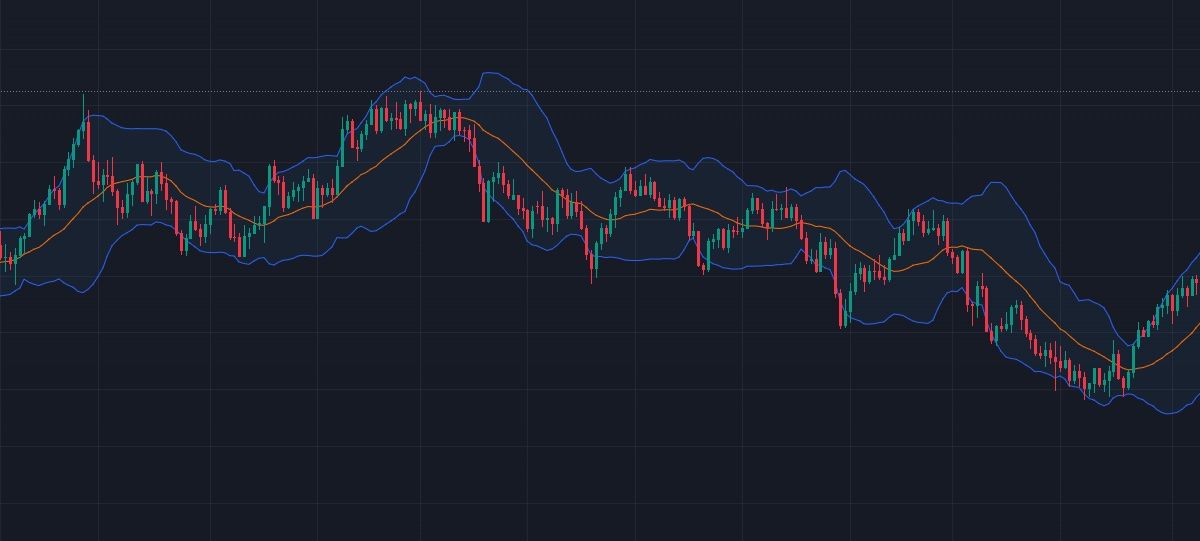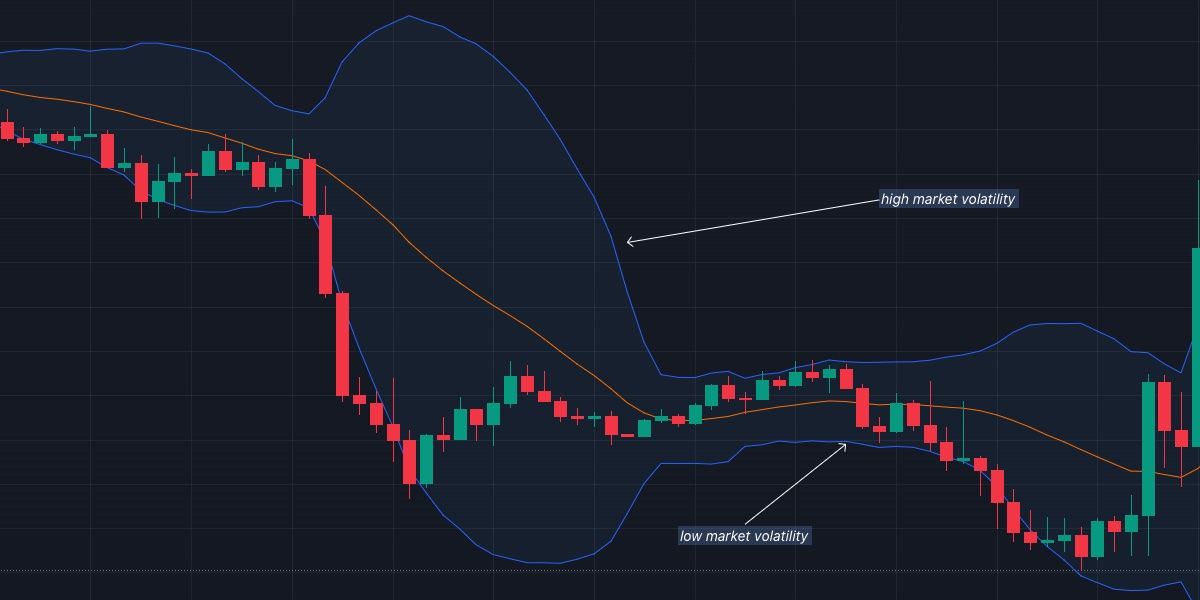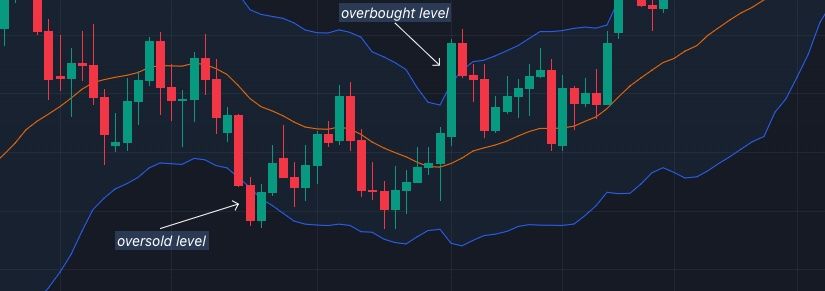[ad_1]
One challenge new crypto traders face is learning technical indicators to analyze and predict market movements and possible entry and exit positions.
The Bollinger Bands indicator has become one of the most popular go-to indicators among crypto traders, not only because of its simplicity, but also because it is one of the most versatile indicators, providing a lot of useful information. For this reason, we will give you more insight into how the Bollinger Bands indicator works, how to use it and some of its limitations.
What is the Bollinger Bands Indicator?
The Bollinger Bands indicator reveals market trends and volatility and identifies overbought and oversold market conditions. It consists of three bands: the upper, middle and lower. Traders use the bands to analyze price action to determine what is going on in the market. John Bollinger developed this indicator in the 1980s, and it has since been used in various financial markets, including the crypto market.
How do Bollinger Bands work?
As mentioned earlier, the technical indicator consists of three bands. The middle band is a 20-day simple moving average (SMA). The upper band is set at two standard deviations above the mean, while the lower band is set at two standard deviations below the mean.
The bands respond to market prices – they move when the market price moves. Market information is obtained by observing price action in relation to the bands’ movement. The trader then uses the information obtained to make various trading decisions.
6 Ways You Can Use Bollinger Bands in Crypto
Let’s look at how different structures in the Bollinger Bands indicator can be interpreted, including how you can use them to determine support and resistance, market volatility, overbought and oversold levels, the market trend, and how to trade them.
1. Support and Resistance
When the price reaches the upper band, traders expect it to form a resistance, while the lower band acts as a support. Depending on the market’s direction, the middle band can also act as a support or resistance level. If the price is below the middle band, traders start looking for price resistance at the middle band. However, if the price is above the middle band, it can act as support.
2. Check market volatility
The contraction or expansion of the trading bands indicates volatility and potential price movement. When the bands (the upper and lower bands) move away from the center line, it means that the market is volatile and an explosive move is about to start or is underway. When they tighten, the market trend is lower, and the ongoing trend may come to an end.
3. Determine overbought and oversold levels
A market is overbought when the price moves above the upper band, while it is oversold when it falls below the lower band. When the market is overbought, traders start looking for ways to sell, and they start looking for ways to buy when the market is oversold.
4. Determination of trends (upward and downward trends)
Crypto traders can use Bollinger Bands to predict whether the price of a coin will continue in an uptrend or downtrend. For example, when the price continuously hits the upper band, it indicates a strong uptrend. Additionally, if the price reverses and does not break below the middle band before returning to the upper band, the uptrend is strong. However, if it breaks below the uptrend and moves to the lower band, it is a sign that the uptrend is weakening, and the crypto price may start to reverse.
On the other hand, if the price continues to touch the lower band, it shows that the downtrend is strong. If the price returns to the middle and then moves back to the lower band, you can say the trend is still strong. However, when it breaks above the midline and moves to the upper band, the trend may become weak, and a reversal may be imminent.
5. Bollinger Squeeze
A pinch occurs when the upper and lower bands move close to the price. At this stage, the market volatility is low, and the price moves within a close range. What you can do here is wait for a breakout and then follow the market’s direction. If the price breaks the upper band, it is likely to go up, but if it breaks the lower band, it is likely to continue down. This way you can follow the trend that starts.
6. Bollinger Bounce
Bollinger bounce is used for trend reversal, and just as its name suggests, when the price touches one of the bands, it bounces off it. The tires, in this case, act as dynamic support and resistance. Bollinger bounce works well in a consolidating market. When the price bounces off the lower band, traders look for buying opportunities, and when it bounces off the higher band, they look for selling opportunities.
Each trader determines how to use the information
Although there are some similarities in how Bollinger Bands information is interpreted, each trader has their own approach.
A trader’s strategy and plan usually informs their unique style. Some traders change the default setting to accommodate their strategies and trading styles. For example, the midband simple moving average is a 20-day simple moving average, which provides information based on the last 20 candlesticks. If you need more long-term information, you can select a longer period.
Bollinger Bands only serve as an indicator of recent market price action. They do not consider many other factors such as fundamental analysis, market sentiment and other factors that can affect the general market price. For this reason, you cannot rely on it to be the sole determining factor of your trading decisions.
Like any other indicator, Bollinger Bands work best when combined with other tools and indicators, as you have more confluences and confirmations for any trade you want to execute.
Bollinger Bands are useful for beginners and experts alike
Although every strategy has drawbacks, Bollinger Bands have been useful for many traders. They are also very popular among novice and expert traders who use indicators. Add the indicator to your chart to see how it works and how the price moves in relation to the three bands. As you understand the indicator, you can add it to your list of useful indicators and even change some of the default settings to suit your needs.
[ad_2]
Disclaimer for Uncirculars, with a Touch of Personality:
While we love diving into the exciting world of crypto here at Uncirculars, remember that this post, and all our content, is purely for your information and exploration. Think of it as your crypto compass, pointing you in the right direction to do your own research and make informed decisions.
No legal, tax, investment, or financial advice should be inferred from these pixels. We’re not fortune tellers or stockbrokers, just passionate crypto enthusiasts sharing our knowledge.
And just like that rollercoaster ride in your favorite DeFi protocol, past performance isn’t a guarantee of future thrills. The value of crypto assets can be as unpredictable as a moon landing, so buckle up and do your due diligence before taking the plunge.
Ultimately, any crypto adventure you embark on is yours alone. We’re just happy to be your crypto companion, cheering you on from the sidelines (and maybe sharing some snacks along the way). So research, explore, and remember, with a little knowledge and a lot of curiosity, you can navigate the crypto cosmos like a pro!
UnCirculars – Cutting through the noise, delivering unbiased crypto news










